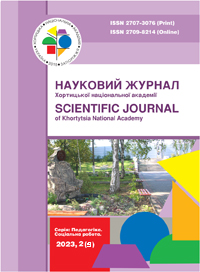UDC 378.147:37.091.31 TRADITIONAL, DISTANCE, BLENDED LEARNING IN HIGHER SCHOOL IN THE CONTEXT OF COMFORT AND EFFECTIVENESS
DOI https://doi.org/10.51706/2707-3076-2023-9-11
Abstract
The article focuses the problem of using different learning models organization at the present time: traditional (classroom/face-to-face), distance and blended learning. Learning models organization were evaluated as a process (comfort indicators): psychological comfort; motivation of the educational/professional activity of all participants in the educational process; as a result (effectiveness indicators): effectiveness of knowledge acquisition, formation and development of skills; effectiveness of students' development personal and professional. The author included 1826 respondents in the anonymous online survey Google Forms during the Covid-19 pandemic in Ukraine (2020-2021), including: 140 PhD students, 172 university teachers, 1514 Bachelor and Master students (1071 in 2020, 443 in 2021); used IBM SPSS Statistics 23 for statistical analyses. Cronbach's alpha varies between 0,813-0,876. Spearman's rank correlation (0,440-0,667) indicate the existence of a medium-level direct relationship between indicators of learning models organization. Respondents believe that traditional face-to-face learning has the best effectiveness for acquiring knowledge, forming the skills of students, for personal and professional development. Learning effectiveness decreases with an increase in the online component. Teachers have maximal psychological comfort in the traditional face-to-face learning, students - blended and distance learning (survey of PhD students) or traditional and blended learning (survey of Bachelor and Master students). The motivation activity (learning/teaching) increases for all respondents in the direction: distance → blended → traditional face-to-face learning. The t-test was calculated for 168 cases, of which 104 cases (62%) did not have statistically significant differences (p≤0,05) between groups of respondents. The analysis shows that in most cases there are no statistically significant differences in the comparison of individual samples on the same basis (gender, specialty, form of education).


